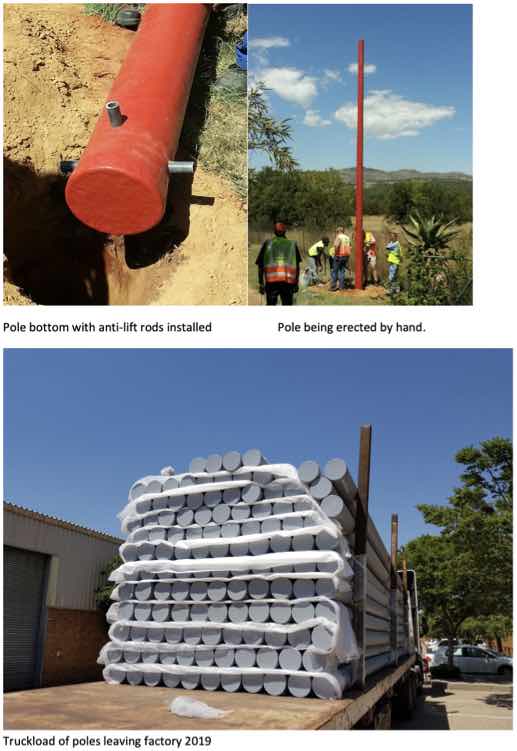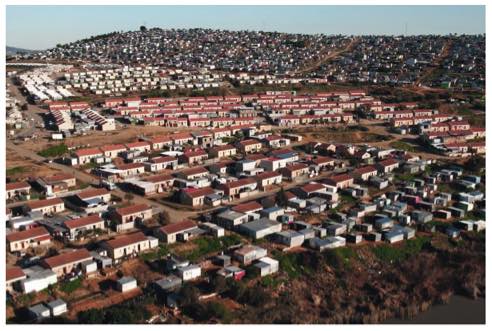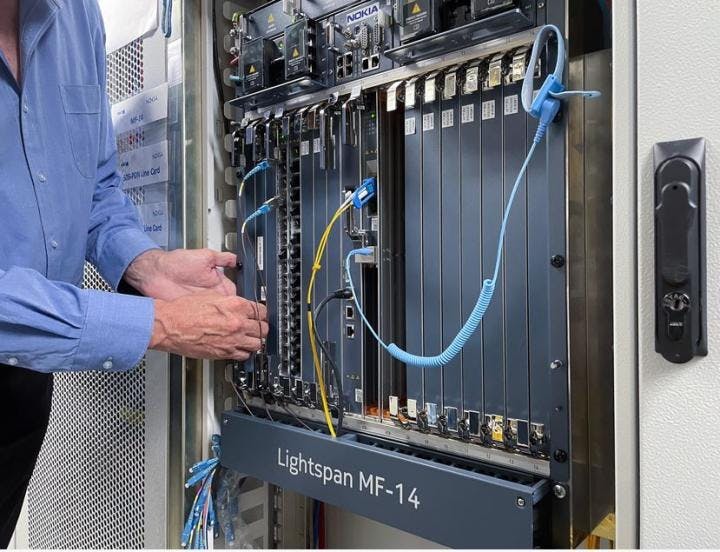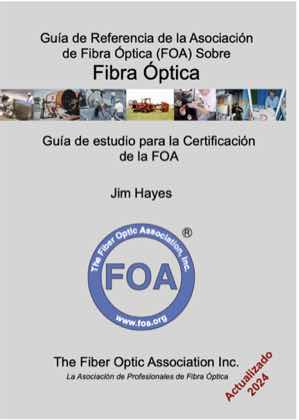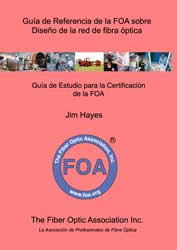
 May 2024 |
|||||||
Search the FOA website FOA Home Page Contact Us |
Sign up for the FOA eMail Newsletter Privacy Policy Links To Sections
|
||||||
|
INDEX Newsletter Sections Click on any link to jump to that section Features Let;s Talk Aerial, poles, safety, training Who/What Is A Fiber Tech? All FOA Certification Credentials Are Online Links To Resources On Broadband News Fiber Optics Benefits Everyone Multi Speeds On Broadband Network Fiber Reaches Rural Brazil New FTTH Textbook in Serbian Language Broadband Communities Summit Technical Hollow Core Fibers How Good Are Your Reference Cables? Introduction To Fiber Project Softwaare Best Example Of Worst Install? New Sumitomo Splicer NECA/FOA Standard Withdrawn Information From A Cable Scrap Managing Projects - Gantt Charts FOA Color Code Guides FOA Online Loss Budget Calculator Worth Reading Lots of interesting articles Q&A Interesting questions from our readers Workforce Training/FiberU Types Of Work Done By Fiber Techs FOA-Approved School News Fiber U MiniCourses Resources New FOA Technical Resources Safety About the FOA FOA Certified Techs: 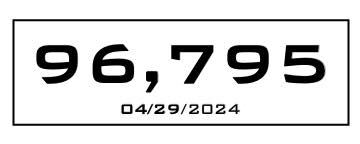 2024 At FOA - Heading For 100,000 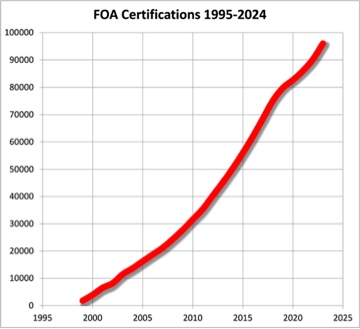 Jobs
Want to be notified when the FOA Newsletter is updated? Sign up for the FOA eMail Newsletter. Trademarks: The FOA logo and name, CFOT® (Certified Fiber Optic Technician) and Fiber U® (the FOA online learning site) are registered trademarks of the FOA.  Want to know more about fiber optics? Looking for specific information? Here's the largest technical reference on the web: The FOA Online Fiber Optic Reference Guide. 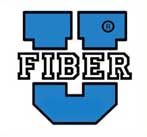 Free online self-study programs on many fiber optics and cabling topics are available at Fiber U, FOA's online web-based training website. FOA Reference Books Available Printed or eBooks The fiber book is available in Spanish and French   
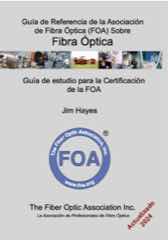 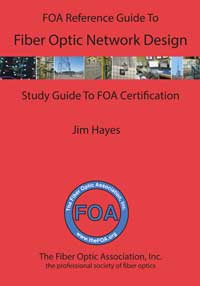 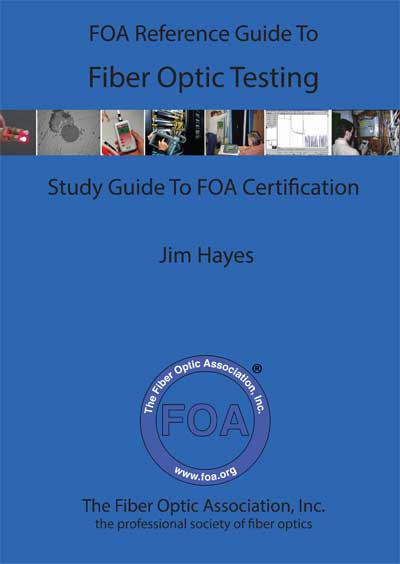 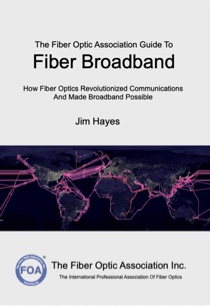 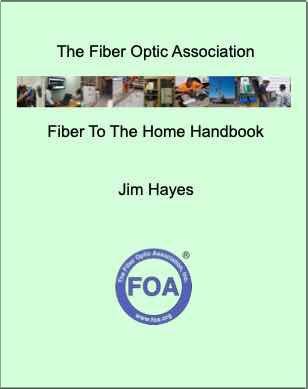 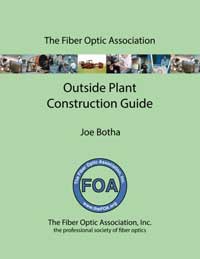 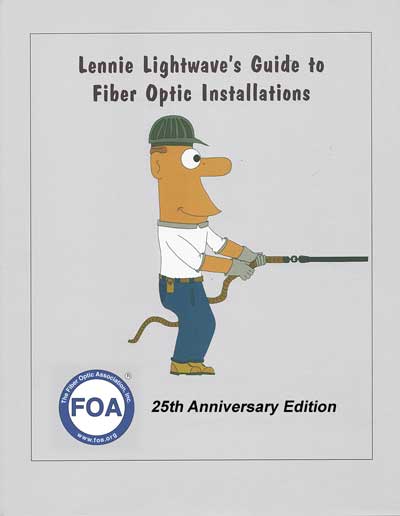 Click on any of the books to learn more.
FOA Videos on FOA is a member of: The FOA Newsletter is edited by Jim Hayes - send your stories, leads, ideas, comments to <jim @ foa.org>  Search the FOA Website With DuckDuckGo
1/22, 2/22, 3/22, 4/22, 5/22, 6/22, 7/22, 8/22, 9/22, 10/22, 11/22, 12/22 1/13, 2/13, 3/13, 4/13, 5/13, 6/13, 7/13, 8/13, 9/13, 10/13, 11/13, 12/13 1/12 , 2/12, 3/12, 4/12, 6/12, 7/12, 8/12, 9/12, 10/12, 11/12, 12/12 1/11 , 2/11, 3/11, 4/11, 6/11, 7/11, 8/11, 9/11, 10/11, 11/11, 12/11, 1/10 , 2/10, 3/10, 4/10, 05/10, 07/10, 08/10, 09/10, 10/10, 11/10 1/09 , 2/09, 3/09, 04/09, 05/09, 07/09, 08/09, 09/09, 10/09, 11/09, 12/09 1/08 , 2/08, 3/08, 4/08, 5/08, 6/08, 7/08, 8/08, 09/08, 10/08, 11/08, 12/08 12/07 , 11/07, 10/07, 09/07, 08/07, 07/07, 06/07, 05/07, 04/07, 03/07, 2/07, 1/07 12/06 , 11/06, 10/06, 09/06, 8/06, 7/06, 6/06, 5/06, 4/06, 3/06, 2/06, 1/06, 12/05 ,11/05, 10/05, 09/05, 08/05, 07/05, 6/05, 5/05, 4/05, 2/05, 01/05, 12/04 , 10/04, 9/04, 8/04, 7/04, 6/04, 5/04, 4/04, 3/04, 1/04, 12/03 , 11/03 10/03 9/03, 8/03, 7/03, 6/03, 3/03, 10/02 , 8/02, 5/02 Current Issue of FOA Newsletter Time To Renew Your FOA Certifications?To keep your FOA certifications active, you need to renew them when they expire every 3 years. Now we have a new more convenient way to renew - an online store at Paypal - where you can quickly and conveniently use your PayPal account or your credit card to renew your certifications.Join FOA On
Social Media
 FOA has 3 LinkedIn Groups FOA - official page on LinkedIn - covers FOA, technology and jobs in the fiber optic marketplace FOA Fiber Optic Training - open to all, covers fiber optic technology and training topics Grupo de La Asociación de Fibra Óptica FOA (Español) |
Let's Talk AerialMany fiber optic networks are built using aerial cables. Aerial cables are generally easier to install than underground cables and cheaper, which is what makes them so popular. Of course some cities do not allow aerial cables because they are unsightly and they are much more susceptible to damage in natural disasters. Aerial cable work is also more dangerous for installers. However, they remain very popular and some schools are now doing OSP aerial installation training.This month the FOA Newsletter will focus on aerial cable plants, look at some new technology and review some safety issues. Joe Botha of Triple Play Fiber Optics in South Africa contributed to this article. Joe is author of the FOA OSP Construction Guide and teaches OSP construction at his school. He sent us a video of training that bears watching. It covers two topics we'll elaborate on - high tech utility poles and safely climbing poles with ladders. High Tech Utility PolesThe first telegraph systems were built almost two centuries ago.
Copper cables were strung on wood poles to carry messages long
distances. By 1861, telegraph lines were installed coast to coast in the
US and many other parts of the world had telegraph networks. Looking around at aerial cables today, it's obvious that most poles
are still wood and judging by the condition of them, might be a century
old! Some poles have been converted to metal, more common in areas where
wildfires can burn down wood poles. Some poles have even been made from
concrete. But Joe told us about a company in SA making poles from
fiberglass (FRP) and we found more companies making these composite
poles. FRP is known for its light weight and strength, obvious advantages
for a utility pole, but what about longevity, fire resistance and, of
course, cost. Joe sent us a communication from a local supplier, Fibre
Pole Technology, that addresses those issues.
Creative Composites Group in Pennsylvania, US. RS Technologies Tilbury, ON, Canada. Safety In Pole Installation And Climbing The video addresses several issues that are important to those installing poles and aerial cables. These poles are lighter weight than wooden poles so more can be transported on one truckload as shown above, but that also means that they can be more easily installed by a smaller crew, sometimes even without cranes. 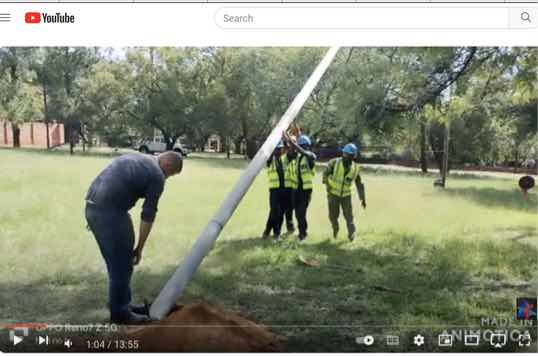 Here you can see that 3 workers can install this pole because it is so lightweight. These composite poles have been widely adopted by local Fibre Network Providers in SA. A composite 9-meter pole weighs only 55kg as a result can be carried by 2 people and planted by 3. A 9-meter wooden pole weights 180 kg (20kg per meter) requiring 8 people to plant it. These composite utility poles are also fire-Resistant. 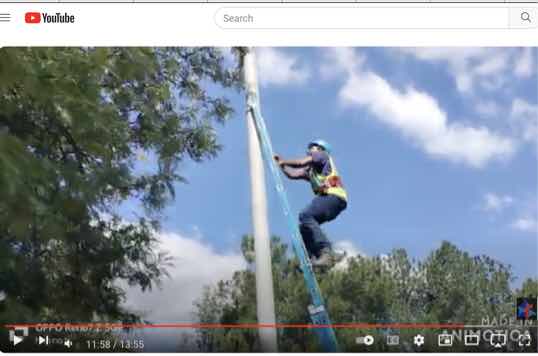 After the pole is installed, it is necessary to install hardware fandcables. That can be done with a bucket truck or on shorter poles a ladder. The video shows the technique of lashing the ladder to the pole in a manner that will make it secure for workers climbing to install hardware and cables. Safety For Pole ClimbersJoe Botha also told us about a unique safety device that is used in SA. Workers on poles install fiber in the telecom space about 1 meter below power lines. There is great danger if the worker gets too close to the power lines, but since they are above their head, it's hard to watch for them. In SA, the pole workers use this gadget: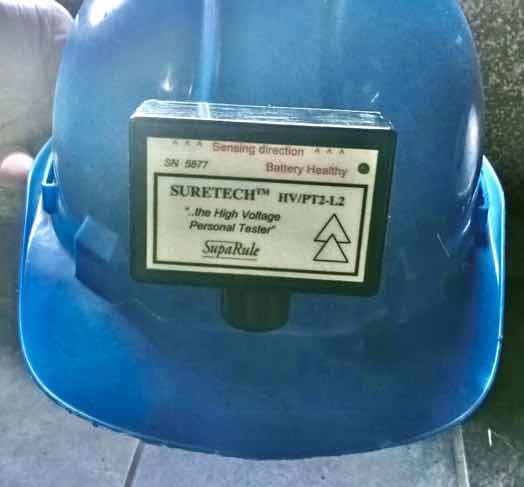 It is a sensor for electric fields mounted on a hard hat. If you get close to an electric wire, it sets off an alarm warning you of danger. This device is made by Sure Engineering CC in Cape Town, SA. Their website has links to sales agents around the world. FOA Schools Teach Aerial Installation Processes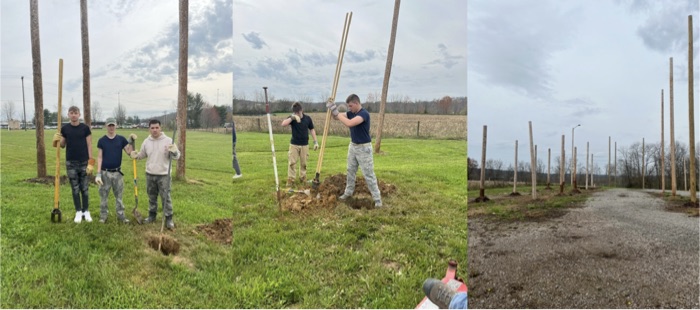 A number of FOA schools have facilities to teach OSP construction including pole placement and climbing. At Buckeye Hills Career Center in SE Ohio, instructor Tim Henderson had a recent class that experienced the work of OSP aerial construction as well as their CPCT class. Power Lineman instructor Mr. Jeremy Jenkins helped the students learn how to place and climb poles, plus ladder safety, bucket truck safety, traffic control and flagger operations and flagger safety. The ten young students (8 boys and 2 girls) attending this Broadband Infrastructure Training at Buckeye Hills course were a select group of students from The Children’s Center of Ohio located near Buckeye Hills. Through the concerted efforts of Mr. Jamie Nash, Superintendent of the Career Center and The Children’s Center of Ohio, they have made possible this partnership and training opportunity for these students. The students have obtained their OSHA General Industry 10 Hr. Card, their First Aid & CPR Card and all passed their FOA CPCT Certification Exam. They have learned valuable skills for the Broadband field such as CAT cabling terminations and wire management skills, reading blue print diagrams and the use of various cable and coax testers and a myriad of hand tools required for a technician and installer in the broadband field. Tim Henderson, FOA Certified CPCT/CFOT Instructor, told FOA, "We are looking forward to future endeavors such as this to help in “Making a Difference” in the lives of these kids, giving them a chance to succeed in life and in a career by simply taking that step forward into new frontiers and blazing new trails into a bright new world of opportunity. Thank you Children’s Center of Ohio for giving us the opportunity to serve you and your students!" Who/What Is A Fiber Tech? What Is Their Future Looking Like? There has been a lot of discussion about the fiber optic workforce recently. The focus on fiber broadband has caused much of the discussion. Fortunately FOA has been working with the US Department of Labor (DoL) Bureau of Labor Statistics (BLS) to define the workforce better, creating the job category Telecommunications Technician, quantify it and make projections about the future of the labor market. FOA has also written many articles about the kinds of work fiber techs do. They are not just installers, they are fiber optic network designers, testers, operators, troubleshooters and fixers. But there is another aspect of the fiber tech that we have not discussed; many fiber techs don't just do fiber. If you look at the attendees of a fiber training class, you find that many come to the class because their work involves fiber but is not exclusively fiber. They are in a class to learn fiber because their job involves several types of communications and they need to learn about fiber along with copper cabling and wireless. FOA has a unique view of the jobs fiber optic technicians are actually doing. We have a database of almost 100,000 people who have become FOA certified. When we look at the database, we see people who work for contractors, telcos, ISPs, and those companies you might expect, but you also see people from wireless tower companies, CATV companies, colleges and universities, electrical utilities and coops, governments, traffic departments, security companies, data centers, insurance companies, stock trading companies, and practically every other type of organization you can imagine. At first glance, it seems that the traditional fiber technician is in the minority. When FOA began certifying people in fiber optics over 25 years ago, many were working with service providers and contractors installing long distance and metropolitan fiber networks to support the rapid expansion of the Internet and telephone service. As cellular networks expanded so did the fiber technicians installing the fiber networks to support them. Many of these were indeed full-time fiber techs. CATV networks were built on coax cable until special lasers made hybrid fiber coax networks practical in the mid-90s. Having techs who could do fiber work as well as coax at CATV service providers became a necessity so they got fiber training and certification. Military and government communications and security personnel were some of the earliest techs trained in fiber optics. Classes were held in their facilities in the early 1980s and it seemed like every military communications tech was learning fiber optics. They had to - they used more fiber optics than anybody. Computer companies also began using fiber as soon as it became available. The bandwidth and distance capability was as important to them as it was to the telcos. In the mid-80s, all the minicomputer companies like DEC and Wang trained their field techs in fiber optics and equipped them to handle fiber as part of their field work. As local area networks (LANs) began getting faster through the 1990s, fiber began being the cabling of choice for LAN backbones. Many techs who had been installing "Cat 5" learned fiber optics and added that to their work portfolio. Around the same time, security companies began having their techs trained in fiber optics. Security cameras installed in large office buildings and along streets were too remote for anything but fiber optics. Cities and towns began installing their own fiber for communications among city facilities, security cameras and traffic controls. Many of the municipal techs doing this work learned fiber optics as a part of their jobs mainly did other technical work. 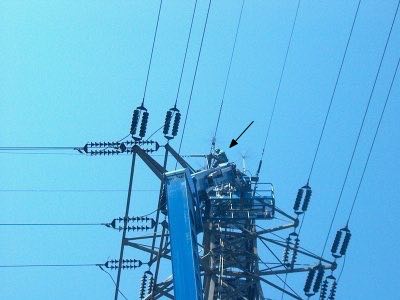 High voltage electrician/fiber tech repairs OPGW High voltage electrician/fiber tech repairs OPGWThen there are the electricians. They began doing fiber work back in the late 1980s when electrical utilities understood the advantages of fiber optic's immunity to electrical interference and began installing fiber optics inside transmission wires and in substations. Fiber became the backbone of utility grid management. Even today, many electrical utilities send many of their techs to fiber classes to maintain current networks and build new ones. Alternative energy techs know fiber too; solar and wind facilities are connected on fiber. Many electricians learn fiber optics because of its use in industrial facilities where they are installing power cables. Some of the early fiber instructors came from electrical backgrounds and when they learned fiber optics, they became the trainers of many more electricians. Today the biggest apprenticeship program that includes fiber optics is managed by the IBEW - the electrical workers union. Get the idea? There are many more techs doing fiber optics work than the ~110,000 that the BLS categorizes as Telecommunications Technicians. And many more do jobs other than connecting.subscribers to broadband networks. Over the next few years, there will be a need for more fiber techs to build middle mile and last mile fiber to the home (FTTH) networks. After this surge is over, will their jobs evaporate? Hardly. Building out more local fiber networks creates a market itself. Remember there is currently a shortage of fiber techs today and practically none of that government money is flowing yet. Those trained in fiber broadband work will move into work connecting more cities, schools, businesses and building more data centers. They will be working for companies that need fiber techs that they will train them in their unique technical specialties. And, perhaps most importantly, they will be replacing those current fiber techs who are retiring over the next few years. Like all the professions today, that is a problem for fiber optics. More about the fiber optic workforce. FOA Programs Support STEM Education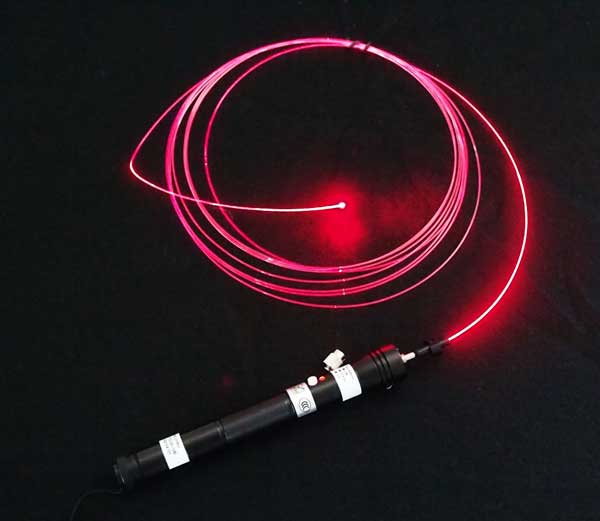 Classroom
Resources For STEM Teachers In K-12 And Technical Schools Classroom
Resources For STEM Teachers In K-12 And Technical SchoolsTeachers in all grades can introduce their students to fiber optic technology with some simple demonstrations. FOA has created a page for STEM or STEAM (science, technology, engineering, arts and math) teachers with materials appropriate to their classes. Fiber Optic Resources For STEM Teachers. FOA also has a YouTube Video on "Careers in Fiber Optics" and a "Careers In Fiber Optics" Website. See below. All FOA Certification Credentials Are Now Online All FOA Certified Fiber Optic Technicians now have their certification credentials online. if your FOA certification has not expired you should have been notified you have an online credential. If you did not get notification it may be because FOA did not have a valid email for you. Contact FOA to inquire about your certification credential. Whats New? The Fiber Optic Association Guide To Fiber Broadband Is A Hit With Broadband Planners Paperback ($12.95) and Kindle ($9.95) versions available from Amazon or most booksellers. Kindle version is in color! New In The FOA Guide - Introduction To Broadband and Guidelines For Fiber Optic Project Planners Cross Reference Guide to Textbooks, Online Guide and Fiber U FOA Videos Guide. FOA has a web page with resources on fiber broadband and the IIJA/BEAD funding programs. FOA Newsletter
Sections
| ||||||
News
|
Fiber Optics Benefits Everyone - Whatever Your Economic Status
The two articles below illustrate that perfectly!
|
||||||
Fiber optic internet reaches rural areas in Rio Grande do Sul, Brazil
|
Internet de fibra óptica chega ao meio rural no Rio Grande do Sul |
 |
|
The program was created by the city of Tapejara in partnership with Coprel Telecom. Tapejara, RS, through the Secretariat of Agriculture, Rural Development and Environment, in partnership with Coprel Telecom, held an event on March 25th on the property of farmer Rodrigo de Rossi, located in the community of Coroado Baixo, to celebrate the arrival of high-speed fiber optic Internet in rural areas, through the Conecta Tapejara program. The official launch of the program represents a milestone for rural areas in the region, with the installation of 288 kilometers of fiber, the result of a joint investment of R$4 million, with R$2 million coming from the municipality and another R$2 million from Coprel. The initiative promises to revolutionize connectivity in rural communities, providing quality and high-speed access. The arrival of high-speed Internet in the interior is essential for several essential activities, including issuing notes, monitoring, leisure and communication. In total, 1329 rural properties will benefit. |
A prefeitura de Tapejara, RS, por meio da Secretaria de Agricultura, Desenvolvimento Rural e Meio Ambiente, em parceria com a Coprel Telecom, realizou no dia 25 de março um evento na propriedade do agricultor Rodrigo de Rossi, localizada na comunidade de Coroado Baixo, para celebrar a chegada da Internet de fibra óptica de alta velocidade ao meio rural, através do programa Conecta Tapejara. ß O lançamento oficial do programa representa um marco para o meio rural da região, com a instalação de 288 quilômetros de fibra, fruto de um investimento conjunto de R$ 4 milhões, sendo R$ 2 milhões provenientes do município e outros R$ 2 milhões da Coprel. A iniciativa promete revolucionar a conectividade nas comunidades rurais, proporcionando acessos de qualidade e alta velocidade. A chegada da Internet de alta velocidade ao interior é fundamental para diversas atividades essenciais, incluindo emissão de notas, monitoramento, lazer e comunicação. Ao todo, serão beneficiadas 1329 propriedades rurais. |
Read more at RTI.
New Technical Book On FTTx In Serbian
Vladimir Grozdanovic is a graduate electrical
engineer for
telecommunications with more than 10 years of experience in access
networks (HFC and FTTH) in large cable operators in Serbia (SBB and
Jotel). He has been writing technical articles for the FOA Newsletter
based on his personal experiences. Now he has applied his writing
talents to a textbook on FTTx in his native language, Serbian. 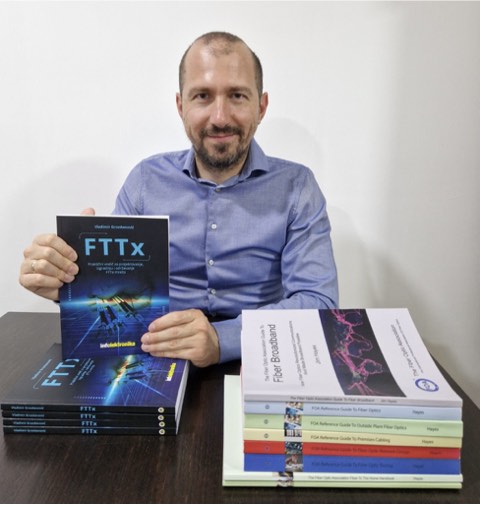
Below is his description of the book (in English!)
The
rapid expansion of the Internet, followed by the introduction of a
greater number of various services, has led to the increased user
demands, which resulted in continuous development of access networks.
Over the past decade, the demand for high bandwidth, high bit
rates in both directions, low latency, and more reliable services have
significantly pushed out old traditional telephone and cable networks
and contributed to the development and widespread popularity of optical
fixed access networks - particularly FTTH (Fiber To The Home).
This book will introduce you to modern FTTx optical networks
and provide a range of practical tips on designing, building, and
maintaining them.
The first part of the book covers the basics of optical
communication systems, types and structure of optical fibres and cables,
followed by fibre and cable labeling conventions, attenuation and
dispersion calculations, and finally measurements performed on optical
networks. The second part is dedicated to FTTx optical networks -
various FTTx scenarios, principles of design and construction, FTTx
testing, and troubleshooting typical problems on FTTx networks.
The book can be ordered through the publisher Infoelektronika website https://www.infoelektronika.net/. Delivery is available to all countries worldwide via standard mail or international express mail EMS.
Quote Of The Month Year:
(this is worth repeating)Speaking at the Goldman Sachs Communacopia +
Technology Conference, AT&T’s CEO John Stankey said, “There’s a
fallacy to say there’s fixed networks and wireless networks. There are
only fiber networks with different access technologies on the end of
them. That’s where this is all going.”
Technical
Fiber optic technology, standards, equipment, installation, etc.
The FOA Update Page covers the new technology and applications we covered in this newsletter recently. Now you can review all that new tech at once.
Cross Reference To FOA Technical Reference Materials
The FOA has almost 1,000 pages of technical information on the FOA Guide,
100+ videos and two dozen online courses at Fiber U, all this can make
it difficult to find the right information.
Cross Reference To FOA Tech Materials
To help this, we have created a cross reference guide to the textbooks,
Online Guide and Fiber U courses, all the FOA technical information.
Besides the textbooks, online Guide and Fiber U, each section of the
Guide also includes links to the 100+ FOA videos available.
Cross Reference Guide to Textbooks, Online Guide and Fiber U
We have also rearranged the 100+ FOA videos in similar categories on the Contents Page of the Online Guide, making the videos, especially the lectures, much it much easier to find a video on a particular topic.
FOA Videos Guide.
|
Sponsored Content
 OptConn
is a value-add re-seller of optical connectivity products, services and
solutions. With over 30 years of experience in the fiber optics
industry we are here to serve your requirements from fiber optic
training with FOA certification to products, materials and supplies. OptConn
is a value-add re-seller of optical connectivity products, services and
solutions. With over 30 years of experience in the fiber optics
industry we are here to serve your requirements from fiber optic
training with FOA certification to products, materials and supplies. We have partnerships with industry leading
manufacturers to support your installation, splicing and testing needs.
Our goal is to guide, support and recognized our client’s requirements. |
Hollow Core Fiber
A recent article written about broadband described optical fiber as a hollow glass tube that transmits light down the hole in the center. We've heard that many times! But it reminded us to look into the current status of real hollow core fiber. We talked to OFS, one of the developers of HCF to get an update.Hollow core fiber (HCF) is basically that - a fiber that transmits light in a air core instead of a solid glass core. The reason for its existence is network latency. Light travels about 50% faster in air or a vacuum than it does in glass, so a light pulse travels from one end of a link to the other faster. In hollow core fiber, the statement "fiber is faster" refers to travel time not bandwidth and the difference is substantial - about 1.5 microseconds per km.
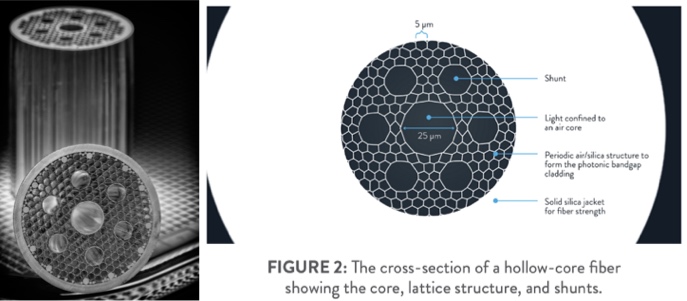
OFS graphics showing the microstructure of the core/cladding inside a solid glass cladding
Hollow core fiber is still under development. A simple hollow tube with an air core won't work well. It has high losses caused by scattering off the core/cladding interface. Research has led to a cladding that has microstructure like that shown in the OFS graphics above which confines light well in the hollow core and reduces losses. However the losses are still high; HCF has a typical attenuation of about 3-5 dB/km, limiting its use to short links. Current R&D has shown promising gains in the laboratory.
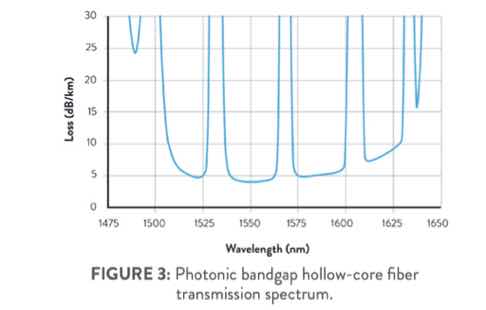
HCF fiber also has unusual attenuation characteristics caused by the microstructure of the cladding. To get low loss you have to carefully choose transmission wavelengths. The microstructure also makes the fiber sensitive to bending and stress which make cabling HCF difficult, but OFS has solved those problems and offers cabled HCF. OFS also offers a special fusion splicer for HCF, the S185PM, that can rotate the fiber to allow matching microsctructure to get low loss.
HCF is not for every application but if latency is important, it can be the right solution. High speed stock traders use it for trading links, often from data centers to microwave towers, since they use microwave links for the same reason - the speed of microwave pulses are also faster than light in a fiber. It has applications in data centers, supercomputers, and other applications where latency is important. Nokia and OFS recently demonstrated high speed coherent transmission in HCF in Europe, FOA Newsletter 03/24 at 800 Gb/s and 1.2 Tb/s. HCF is also useful in applications involving high power levels as it lacks the nonlinear effects seen in glass core fibers.
Read more about OFS AccuCore HCF There are several technical papers at the end of the page that will provide more technical details on HCF.
How Good Are Your OTDR Launch/Receive Cables?
FOA received an inquiry about some OTDR traces that showed failures. Quite a few fibers failed at the final connection to the receive cable, indicating that there could be a problem with the connection - dirt of a bad connector on the receive cable. Have you checked the connectors on your OTDR - or OLTS - reference cables recently? You should inspect and clean them regularly - every few connections - to ensure they are good. If they are bad, they will cause false failures on the cable under test.Introduction to GIS and Fiber Management Systems
There is a rising demand for efficient fiber optic network solutions, and Jerry Morla has written an article offers an overview of digital management tools, including emerging options and traditional platforms. These tools are essential for planning, implementing, and maintaining networks, ensuring operational efficiency and customer satisfaction in the telecommunications and fiber optics sectors. If you need more information in this area, check out the following article:While Geographic Information Systems (GIS), Fiber Network Management Systems (FNMS), and Operational Support Systems/Business Support Systems (OSS/BSS) each serve distinct purposes, their integrated functionality enables efficient, reliable, and customer-focused fiber optic network deployment and operations. Understanding their roles, differences, and synergies provides a comprehensive view of the technological orchestration behind the scenes of our interconnected world.
Read the article here in the FOA Guide.
Yet Another Candidate For Best Example Of Worst Install
Kennesaw, GA on corner of Wade Green and Jiles Rd.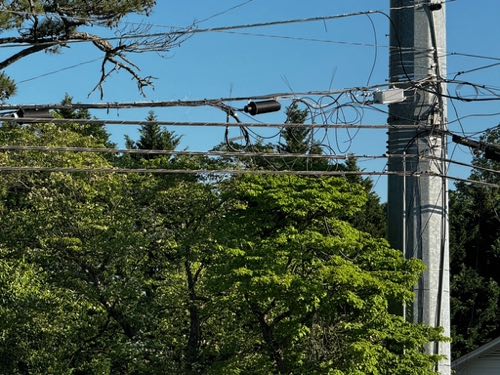
Woodstock GA, corner of Jamerson Rd and Trickum Rd, NE corner
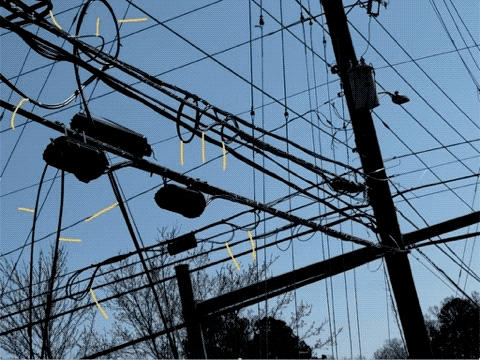
Contributed by Eric Pearson of Pearson Technologies. Eric is FOA School #101 - the second FOA Approved School.
SUMITOMO Q502S Clad-Alignment Fusion Splicer Is FAST!
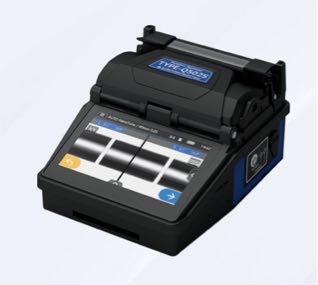
The Q502S fusion splicer features new technology that provides enhanced performance, reliability, and user experience for your fiber network. The Q502S includes NanotuneTM Technology and SumiCloudTM which ensure superior field operation efficiency. Its included carry case and working tray have been designed to be very useful for field splicing applications.
This next-gen fusion splicer offers fast operation - splicing takes only 6 seconds and heating takes 12 seconds - and provides accurate estimated loss by analyzing the fiber through high-quality microscopes during splicing.
The Q502S is Sumitomo's lower cost clad alignment splicer. The optics required for clad alignment helps keep the cost of this splicer down. MSRP approx.. $4,000 for a kit – which includes cleave tool, case and consumables.
NECA/FOA 301 fiber optic installation standard withdrawn
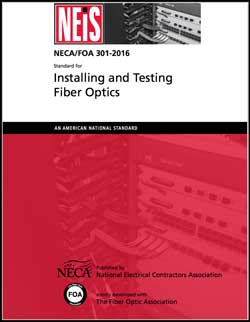 The NECA/FOA 301 fiber optic installation standard has been
withdrawn. It's almost a quarter century old and a decade since the
last update. It has been decided the standard needs to be replaced with a
more modern document covering current technology and written in a
format that allows easier updating.
The NECA/FOA 301 fiber optic installation standard has been
withdrawn. It's almost a quarter century old and a decade since the
last update. It has been decided the standard needs to be replaced with a
more modern document covering current technology and written in a
format that allows easier updating. In the meantime, there is lots of useful information in the standard and you can still download a free copy from FOA.
Download your free copy of ANSI/NECA/FOA-301 here (PDF)
FTTH Technical Papers
FOA contributor Vladimir Grozdanovic has created
another technical paper on testing FTTH PON based on his field experiences.
Testing The FTTH PON Network (new)
Installation of FTTH Active Equipment in the FOA Guide.
Optical Splitters in the FOA Guide.
Examples of poor installation of FTTH in the aerial outside plant and in the customer premises.
Recycling Fiber Optic Cables? Contact LD4 Recycle
Learning Important Information From A Found Cable Scrap
While walking down the street near the FOA office, we found this cable
laying in the gutter. What a find! A short length of Corning Rocket
Ribbon 864 fiber cable left over from an installation by a contractor. 
We brought the cable back to our office with the intention of opening it up and creating a video about the construction of this modern high fiber count cable, but something got our attention first. The cable had a very long line of printing on it with lots of interesting and useful information. So before we started deconstructing it, we decided to photograph the printed information and interpret it. That turned out to be an important part of the information we learned from the cable. Then, as you will see below, we dissected the cable and learned even more.
Red more about what this cable marking tells you and what the cable looks like when you open it up to prepare for splicing.
Managing Fiber Optic Projects - The Gantt Chart
(With An Excel File To Make Your Own)
The most common way to track projects is the Gantt Chart, a
chart of activities that tracks the progress of projects along a
timeline. each activity is represented by a bar and the position and
length of the bar represents the starting date and duration of the
activity. This allows you to see what activities are needed for the
project, when the activities start and end so it can be used to track
the progress of the project visually. Here is what a Gantt Chart for a
fiber project might look like:
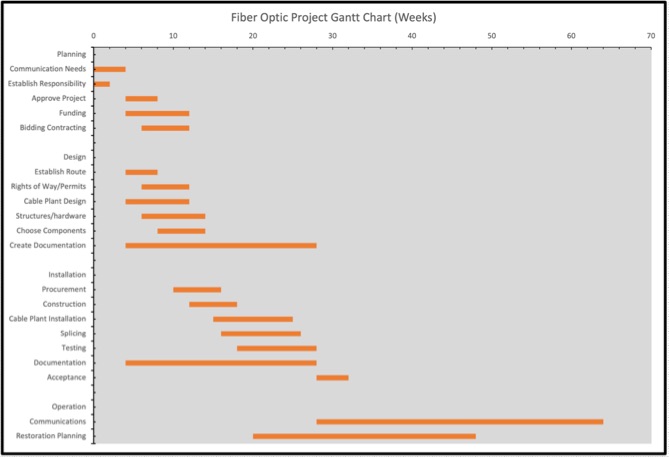 You might remember an article in the FOA Newsletter in April 2022 or the FOA Guide page on Project Management about the timing of a fiber optic project where we showed the progression of steps in a project like this:
You might remember an article in the FOA Newsletter in April 2022 or the FOA Guide page on Project Management about the timing of a fiber optic project where we showed the progression of steps in a project like this: The Gantt Chart is simply this list converted to a Gantt Chart using a Microsoft Excel spreadsheet. You can download a copy of the FOA Gantt Chart spreadsheet (xlsx file - 16kB) and use it to create your own Gantt Chart for any project. All you have to do is to input your own data and change the activity names as necessary. You can also follow the directions from Microsoft to create your own version.
Help On Color Codes (Including Copper Cabling And Fiber Optics)
The FOA has created a print-your-own pocket guide to fiber
optic color codes. It has
color codes for fibers and buffer tubes, connectors and premises cables
inside and on the back, QR codes to take you directly to the FOA Guide
and Fiber U. The FOA
Guide page on Fiber Optic Color Codes is one of the most read pages on the FOA
website and the Fiber Optic Color Codes minicourse on Fiber U very popular also.
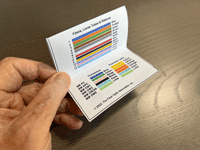
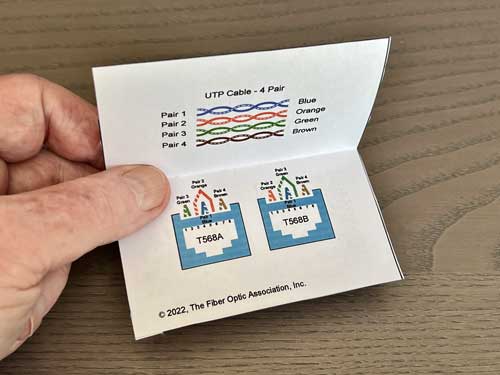

Here are the links to download your own FOA Guides to Fiber Optic Color Codes
FOA Guide to Fiber Optic Color Codes (print your own version) PDF
FOA Guide to Fiber Optic Color Codes (electronic version for your smartphone, tablet or PC) PDF
And Color Codes For UTP Cabling
FOA Guide to UTP Cabling Color Codes (print your own version) PDF
FOA Guide to UTP Copper Cabling Color Codes (electronic version) PDF
Warning For Techs Doing OSP Restoration
 FOA received an inquiry about whether techs
working on restoring OSP links should be concerned about eye safety if
the link used fiber amplifiers. To answer this question, we had to do some research on fiber amplifiers.
The short answer is YES, you should be concerned. The long answer is
more technical and includes details that every OSP tech needs to know.
FOA received an inquiry about whether techs
working on restoring OSP links should be concerned about eye safety if
the link used fiber amplifiers. To answer this question, we had to do some research on fiber amplifiers.
The short answer is YES, you should be concerned. The long answer is
more technical and includes details that every OSP tech needs to know.See "Fiber Amps And Restoration" in the FOA Newsletter Archives..
Try The FOA's Online
Loss Budget Calculator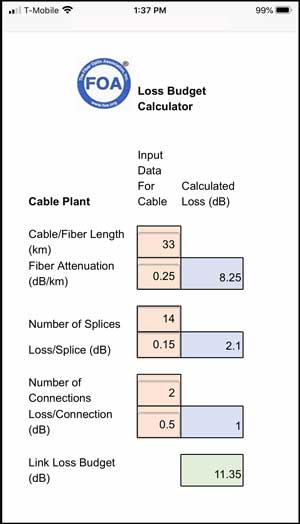
FOA has written many articles about loss budgets, something everyone involved in fiber optics needs to know and needs to know how to calculate. We've created a online Loss Budget Calculator that does the work for you. Just input your cable plant data and it calculates the loss budget. It works on any device, especially smartphones and tablets for field use and even allows printing the results.
Bookmark this page (especially on your smartphone): FOA Loss Budget Calculator Online
Worth Reading
Each month we read hundreds of newsletters and online articles. These are the ones we think you will find "worth reading."
FOA has a web page with resources on fiber broadband networks and the IIJA/BEAD funding programs.
Cross Reference Guide to FOA Textbooks, Online Guide and Fiber U
FOA Timeline of Fiber Optic History and the new FOA video "The History Of Fiber Optics"
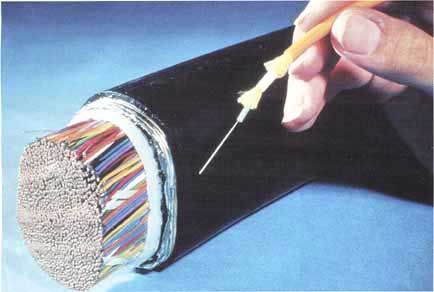 AT&T PR photo from the mid 1970s
AT&T PR photo from the mid 1970sThe FOA's History
Stories From The Past FOA Newsletters
- Last Gasp For Multimode Fiber?
-
Who Lost Lucent? The Decline of America's Telecom Industry.
- How Many Fibers? Optimal cable Size.
- Women Installers In Alaska. .
- Building Rural FTTH - Learning From The History Of Rural Electrification.
-
Warning For Techs Doing Restoration (Fiber Amplification).
- The Future Of Work Is Skills - So Stop Worrying About Degrees - The reality is the future of work is about skills, not just degrees. (FOA Newsletter Feb 2020)
Recent articles from The FOA Newsletter
Fake OTDR Traces Submitted For Testing Documentation January 2023 Tech
Using OTDRs To Test Transoceanic Cables And PONs February 2023
POF - the Other Fiber March 2023
What Do Employers Expect From A Fiber Optic Tech? April 2023
Are Standards Ignoring The OSP? May 2023
FOA Has Proven Results In Fiber Optic Workforce Development June 2023
BEAD Funding For States Announced And Analyzed July 2023
Wisdom From The Street (Analyzing the printing on a fiber optic cable) July 2023
Focus On Disasters August 2023
FOA's Role In Education and Work Done By Fiber Techs September 2023
The Workforce: New US DoL Bureau of Labor Statistics Telecom Tech Category October 2023
How Many Telecom Techs Do We Need and How Big Is The Fiber Optic Market November 2023
Guidelines For Fiber Optic Project Planners December 2023
2023 Year In Review. Kentucky Shows The Value Of Fiber January 2024.
What is Broadband? History of the Cable Modem February 2024
It's Just Economics. Things you need to know. March 2024.
Worth Reading (And
Watching):
April 2024
The March/April Digital Edition of ISE Magazine - Interesting interviews and an article on preparing for disasters.
NDIA Releases State Digital Equity Implementation Manual - the essential guide for all states, territories, and DC–to build a state digital equity plan.
Copper decommissions spread across the US, albeit quietly
- Some smaller US telecom providers are toying with the notion of
shutting down their copper networks, following years of pioneering
efforts by bigger network operators like AT&T and Verizon.
Scientists ride new fiber wavelengths for terabit speed - A team of researchers got to terabit speeds using E- and S-band spectrum over a single optical fiber
Entel: Building an 800G optical backbone network to enable digital Chile - Interview with Luis Uribe, the CTO of Entel,
The AI hype bubble is deflating. Now comes the hard part. - Washington Post - The tech industry got the world’s attention with AI. Now it’s busy convincing people to pay for it.
Internet data centers are fueling drive to old power source: Coal - Antiquated coal-powered electricity plants that had been scheduled to go offline will need to keep running to fuel the increasing need for more power at data centers, undermining clean energy goals.
HOW AUTHORITARIAN REGIMES CONTROL THE INTERNET - Futurity -
Authoritarian regimes exert control over the internet through transit
networks that operate largely out of public view, according to a recent
study by researchers in the US and Germany.
March 2024
Can Our Industry Develop Fiber Talent? ISE Magazine. Learn how states, schools and training organizations must work together to develop fiber field talent.
Landlines are dying out. But to some, they’re a lifeline. Washington Post Providers want to scale back landline service, but people with poor cell reception still rely on it for emergencies.
What’s Ahead for Fiber-Optic Markets and Technologies? CI&M Magazine Video. Interview
with AFL’s vice president of market strategy and innovation Seán Adam
talking about 2024 and the future. Hint - broadband is not the biggest
driver of the fiber optic market!
Can Xerox’s PARC, a Silicon Valley Icon, Find New Life with SRI? NYTimes. Xerox's
Palo ALto Research Lab was the innovative lab that created laser
printers, the graphic user interface and mouse for PCs and Ethernet.
Xerox just gave it to Stanford Research Insitute. What will happen?
Choice Broadband and Tarana Partner to Narrow Navajo Nation’s Digital Divide. Tarana Wireless. Discusses new developments in wireless for rural areas.
Recent Articles
Pre-Excavation Safety Checklist (PDF) - Excavation Safety Alliance - essential steps before breaking ground for underground construction.
Fiber vs Wireless - Are You Kidding? ISE Magazine Of course we need both!Developing a Fiber Workforce Really Does Take A Village - ISE magazine looks at the role of manufacturers' training in developing the fiber workforce.
How Many More Fiber Techs Do We Really Need? - ISE Magazine
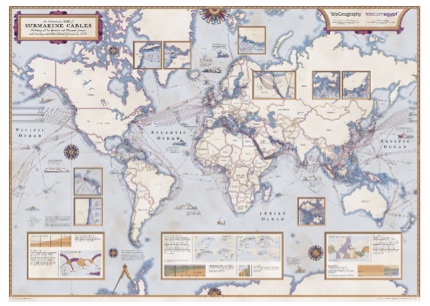
CABL® (cabl.com) serves the business needs of the Broadband industry (including traditional cable TV, fiber, telecom and satellite providers) with employment listings, classified ads, discussion forums, and more. A contractor told us it's where they find lots of opportunities for subcontracting.
Do You Believe In Magic? Sufficiently advanced technology is indistinguishable from magic. ISE Magazine.
The 45 Year Old Overnight Sensation - ISE Magazine (Read the complete Nov/Dec issue of ISE Magazine here.
ESRI has created an ebook on GIS location technology for telecom. Use the link to download the book.
Conocimiento Esencial: ¿Por qué la fibra óptica? creado por FiberWizards
Recruiting And Training Today's Fiber Optic Workforce - Learn the fundamentals to recruit and train new fiber optics -ISE Magazine.
Google Video On Their Undersea Cables YouTube Slick but interesting video on how undersea cables are designed, built and used.
Construction Without Disruption - ISE Magazine
Fiber Optics Installed By The Lowest Bidder - ISE Magazine
Building Broadband During Component and Worker Shortages
- Broadband Communities - Completing broadband builds requires
competent fiber optic techs, but training them requires understanding
how they learn.
Worth Reading - Magazines, Websites and Newsletters
CABL® (cabl.com) serves
the business needs of the Broadband industry (including traditional
cable TV, fiber, telecom and satellite providers) with employment
listings, classified ads, discussion forums, and more. A contractor told us it's where they find lots of opportunities for subcontracting.
The Institute for Local
Self-Reliance weekly newsletter has
lots of interesting articles and links.
Next Century Cities Newsletter
- News from cities around the US
including Detroit and New York plus small
New Fiber Optic Magazine In Spanish
We do not know about the fate of Todo Fibra Optica following the passing of Jose.
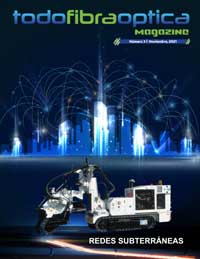 Read their newsletter here. It is now available online in English and Spanish.
Read their newsletter here. It is now available online in English and Spanish.All issues and subscriptions.
Contact:
José Manuel Enriquez Mora, Editor
Todo Fibra Optica LLC
https://todofibraoptica.com/revista-ediciones/
+52 222 302 8224
jose.enriquez@todofibraoptica.com
RTI Telecom Magazine from Brazil, in Portuguese. A revista RTI do mês de abril já está disponível online e recomendo a leitura de alguns artigos:
FOA was founded in 1995 - FOA's History
As part of celebrating 25 years of serving the fiber optic industry in 2020 as its primary source of technical information and independent certifying body, FOA thought it appropriate to create a short history of the organization and how it has developed to help the fiber optic industry. We also wanted to recognize the contributions many people have made to the organization over the years that made FOA what it is today.The FOA history is now archived on the FOA website where you can read it anytime or link to it. Updated info - dB, total internal reflection and science projects,
Worth Reading - History & Technical
1983 Video of AT&T's First Test Of A Submarine Cable System From the AT&T Tech Channel archives (worth exploring!)
Richard Epworth's Optical Fiber History from his work at STL from 1966 with Charles Kao.
50th Anniversary of The Development of Low Loss Fibers A history of the development of low loss fiber, a fascinating story by Jeff Hecht on the OSA (Optical Society of America) website.
The First Transcontinental Telephone Line began operation on July 29th in 1915 - 3400 miles between New York and San Francisco - required over 100,000 telephone poles! Wonders of World Engineering
"Who Lost Lucent?: The Decline of America's Telecom Equipment Industry"
This is a MUST READ for managers in telecom or any industry!
Communications Systems Grounding Rules: Article 800 provides specific requirements by Michael Johnston, NECA Executive Director of Standards and Safety in EC Magazine
US Broadband Coverage By Service Provider from the FCC
How To Build Rural Broadband, Learning From History
In the August 2021 FOA Newsletter, we published a lengthy article on rural broadband and compared it to rural electrification in America in the last century. Much of the comparison was based on an article written in 1940 by a USDA economist, Robert Beall, called "Rural Electrification." If you are interested in or involved in rural broadband, we recommend you read the article "How To Build Rural Broadband, Learning From History" in the August 2021 FOA Newsletter and read the Beall article also.
Recycling Fiber Optic Cable - Contact:
Steve Maginnis
LD4Recycle/ CommuniCom Recycling
(Visit website)
sm@LD4Recycle.com
803.371.5436
Sumitomo's Ribbon Splicing Guide - download from one of the leaders in splicing.
OFS also has an excellent website and blog of tech articles worth browsing.
IEC 60050 - International Electrotechnical Vocabulary - An extensive dictionary for fiber optics in English and French. Highly technical - this is one definition: "mode - one solution of Maxwell's equations, representing an electromagnetic field in a certain space domain and belonging to a family of independent solutions defined by specified boundary conditions"
Restoration: If you are interested in restoration -
aren't we all? - you should also read this
article in dpPro magazine by FOA President Jim
Hayes: Damage Protection Requires
Looking Overhead As Well As Underground
- dpPRO Magazine - about the problems with
aerial cables. His previous article for the
magazine was New Techniques for Fiber
Optic Installation.
Universal access to broadband
is a cornerstone to a strong economy,
Achieving universal access will require
community partnerships. by Alfreda
B. Norman, Sr. VP, Federal Reserve Bank of
Dallas
FIBER TO THE FARM: The
co-ops that electrified Depression-era farms are
now building rural internet. Be sure to check out
the high-tech equine installation equipment.
Infrastructure Get Some
Respect, NY TImes "On Tech"
"The magic of the internet requires a lot of
very boring stuff behind the scenes. "
Fiber Trivia From Corning.
VIAVI Books On Fiber Optic Testing (2 volumes) - They're back!
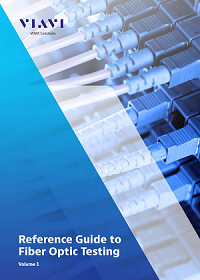
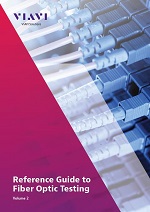
Besides the FOA reference materials, two JDSU/VIAVI textbooks, Reference Guide to Fiber Optic Testing, Volumes 1 and 2, were used as references for some of the FOA courses and are recommended for instructors and students. The books are available from VIAVI as eBooks and the everyone should download them and recommend them to others.Download yours now. Volume 1. Volume 2. Viavi Books
Ciena's Submarine Cable Handbooks (4 to download)
How OFS Makes Fiber
Interesting YouTube video on how fiber is made. Perhaps a little too much "show biz" but fascinating. If you have ever seen fiber manufacture, look at this video. You will be amazed at how big preforms have become!
The True Cost of Telco Damages (what backhoe fade or target practice can cost)
Rural Electric Cooperatives: Pole Attachment Policies and Issues, June 2019.
Q&A
When readers ask us questions, we genrally refer them to FOA
resources where they can find the answer to their question and many
more. We first send them to the FOA Guide
which is the table of contents for the FOA technical resources. There
they can find pages indexed by topic and a search engine for the FOA
website. It also links them to FOA videos and courses on our free online learning site Fiber U.
The FOA Fiber FAQs Page (FAQs = frequently asked questions) gathers up questions readers have asked us (which first ran in this newsletter) and adds tech topics of general interest.
Good Question!
Tech
Questions/Comments From FOA Newsletter Readers
More Q&A in the FOA FAQs Page
Depth To Bury Fiber Optic Cable
Q: What is the ideal depth to bury a fiber optic internet cable for home
use? What is the minimum depth to prevent injury to the cable?
A: Normally fiber optic cable is buried about 3 ft/1m deep, but with
drops to the home, in the subscriber’s yard, it’s considered acceptable
to go only ~1ft/30cm deep with a narrow trench to prevent damage to the
lawn. It’s important that th eowner know exactly where the cable is
however since they must be careful when digging near it to prevent
damage.
DIY Fiber Optic Home Install
Q: I'm interested in getting advice on what components to buy, and
connect, to run Fiber Optics throughout my home. I want to run Fiber
Optics from my telephone pole outside, right to the wall plates in each
room. Can you offer advice on what hardware devices I should
purchase to make this system work. Or can you lead me to someone who can
offer advice? Or even diagrams of a Home Fiber Optic set-up that I can
follow?
A: In order to connect to that pole outside your house, you need to have
a contract with the service provider. They will provide the equipment
and set up the service. That includes running fiber to the house,
attaching a conversion device that provides connections to the Internet
using Ethernet, phone service and TV also if you subscribe to those
services.
Q: Is it possible for you to please send me a fiber optic color code bundle pocket size?
A: FOA has color code guides you can print yourself or download to your smartphone or tablet.
See https://foa.org/tech/ColCodes.htm
What's included in a government grant?
Q: When a companyb is awarded a 'government grant' to
install fiber in a given area, does the 'grant' money also include the
splicing, testing, etc; is it dark or lit?How about providing the
transmission of actual broadband services to a home or business?
A: What is included in grants depends on the project
submission. A "middle mile" project could include the fiber optic cable
plant with drops for users to connect to dark fibers or be a complete
communication system with carrier Ethernet service points to users to
connect. In either case, it includes all the construction, cable plant
installation and testing.
A communications system proposal could also include connecting users if
the originator of the proposal knew the number of users to be connected
-each one of which adds costs. Same for a FTTH network. It could just be
the cable plant, a functioning PON system with drops available to all
users passed or include connecting users. One could do an educated guess
on the percentage of homes passed that would connect, or include a user
paid connection fee to cover the costs.
It depends on the proposal that was submitted and approved.
How to handle results from OTDR measurements
Q: The discussion evolves around how to handle results from OTDR measurements.
The cable manufacturer wants to average the results of a splice event
from a set of bi-directional OTDR measurements. Essentially, the
cable manufacturer wants to average the loss measurements from the
bi-directional measurements. In specific, we have an event (that
we think is a splice) that has a loss in one direction and a reflection
in the other direction
A: The issue of bidirectional OTDR measurements is covered in the FOA Guide: https://foa.org/tech/ref/testing/OTDR/OTDR.html
Wavelengths
Q: What is different between 1310 nm and 1550nm
A: Those are the two wavelengths used with singlemode fiber.
They are used because they were two wavelengths that the fiber would be
singlemode (>1270nm) and wavelengths that it was easy to make solid
state lasers 40 years ago when they were introduced. Longer
wavelengths like 1550nm have lower loss in the fibers so the
fibers for very long distance links are optimized for 1550nm
Mating Mismatched Connectors
Q: I have a question during OTDR Testing... The interface
port of the OTDR is SC-APC so i have also a launch cable with SC-APC
connectors, end to end. the fiber cable plant that i need to test has a
patch panel connector of LC-UPC.. can i use a hybrid adapter to connect
my launch cable to the patch panel? if this is allowed, what will be the
formula for calculating the connector loss.. note: the adapter has an
insertion loss of <0.3dB
A: You need to use a hybrid adapter cable with a LC/UPC
connector on one end to connect to the cable plant under test and a
connector to connect to your usual launch cable - and that cable needs
to be longer than the dead zone of the OTDR so the connection to the
cable plant can be separated and not affected by the connection on the
other end to your normal launch cable. Alternatively, you can have a
hybrid launch cable with SC/APC on the OTDR end and LC/UPC on the cable
plant end.
You cannot use a hybrid mating adapter. The angled SC/APC connector
cannot be mated to a UPC connector. Anyway th ehybrid SCLC mating
adapters are not a good idea becasue of the difference in the diameter
of the ferrules.
Q: A client is requesting a certification according to ISO/IEC 11801, ISO/IEC 14763-3, TIA- 526.7-A, TIA-568.3-D, ANSI/TIA 568 C.3 or later. I own a single-mode OTDR and a power meter with a Microscope. If I take measurements with all three units and calculate the maximum allowable drop according to length and given connectors or splicing to give results on a pass or fail will be adequate or we have to measure with an OLTS?
A: There is a task force in TIA TR42.11 trying to rationalize these standards. Today most standards require testing with a light source and power meter (LSPM) or optical loss test set (OLTS) which are the same thing as the accepted method for testing an installed cable plant. Several international standards now allow OTDR testing for acceptance, but not in any TIA or US standards. So one should assume OTDR tests are not acceptable, only OLTS testing.
FTTH Network Loss
Q: What are the causes of high loss in FTTH
A: The loss can be connections, including dirty connections, bad splices, damaged cables, even a bad splitter. Have you tested with a high resolution OTDR?
GIS Programs
Q: Have you done any reviews on OSP fiber route-structure mapping systems and the associated GIS, or do you have opinions on the best ones/combinations (Esri, 3GIS, Bentley, Graphical Networks, Vetro, etc.)? Or can you point me somewhere to go read, search doesn't come up with a lot of details.
A: Among the most established ones here in US are ArcGIS, IQGeo, 3-GIS, Vetro and OZmap. All seem to have proponents but we do not have much practical experience except one of the FOA Tech Advisors uses OZ map.
Older Questions:
Fiber Loss Budget
Q: For a fibre of total distance of 160km, what should be the standard total loss per kilometre?
A: The typical loss for SM fiber is ~0.35-0.4 dB/km at 1310 nm or ~0.15-0.2 dB/km at 1550. We assume a system like this will be using 1550 nm. You can use the FOA online Loss budget Calculator https://foa.org/tech/ref/Loss_Budget/Loss_Budget.htm to estimate the total link loss
Reuse Of Cable Being Removed From Service
Q: Is there ever a feasible reuse for used/older fiber optic cable? Would some one be in the market for the FOC that is removed from service? Lets say 20year old aerial cable ADSS?
A: We have been asked that question a lot. It often involves cheap fiber on eBay or from surplus dealers. With the advances in fiber technology and manufacturing, 20 or even 10-year old fiber is essentially obsolete. Lots of service providers are replacing that fiber with today’s higher performance fibers because networks are going from the ~2 gigabit speeds then to terabit speeds today. We would never recommend reusing fiber removed from service. You have no knowledge of how it was installed originally and environmental conditions can be hard on some types of cables. Besides, the cost of the cable is only 5-15% of the project cost. Most of the cost is in the labor of installation so the savings would be minimal and the risk high.
We have been telling people who have leftover cable from projects to offer it to FOA schools. They are always in need of OSP cables.
Minimizing Latency
Q: Latency a term that is widely used today. If we manage to make the light travel without interruption we will achieve that the speed is perfect, but the equipment (router, OLT, firewall, etc) generates a processing that takes some time, do you think that LATENCY 0 will be achieved?
A: The work on achieving minimal latency has been gong on for decades, primarily driven by the computerized stock traders who rely on microsecond trading. One recent project used an experimental fiber with a hollow core becasue light travels 50% faster in the air than glass. Most low latency networks try to use the longest fiber links possible using submarine cable technology because the electronic switching takes too much time. But most electronics require digital signal processing in the transceivers which takes time, switches to the trading computers takes time and while you can minimize it all, it can never reach “0”.
Microtrenching
Q: What is microtrenching?
A: Microtrenching is a technique for installing underground fiber. It is done by sawing a groove in the road or sidewalk and dropping a small (~1/2 inch or 13mm) plastic tube (duct) into the groove and filling it up with material like the surface so it almost disappears. The cable is “blown” into the duct with high pressure air - actually the air floats the cable in the duct to reduce friction and the cable is pushed into the duct.
Here are photos of a microtrenching installation in Toronto. Here is the explanation of microtrenching in the FOA Guide section on OSP Construction (about 3/4 down the page.)
We don’t think any of our schools teach this in the US but Triple Play does in South Africa.
In the US we recommend going to one of the companies that makes the construction equipment, primarily Ditch Witch.
Degraded Underground Fiber Optic Cable
Q: How can you handle a degraded buried underground fiber link, which has degraded due to multiple joints introduced during maintenance?
A: If it has reached a point where the loss or dispersion limits its use, it probably should be replaced.
Maintaining Fusion Splicers
Q: What are the best practices for the preventative maintenance of splicers, cleavers, and thermal strippers.
A: Because of the large number of manufacturers and variety of models and applications, The FOA generally tells people to follow the manufacturer’s directions for use and be especially careful about keeping the splicer unit, cleaver and stripping tools clean, then having it serviced regularly by the manufacturer or an authorized service facility.
Rural FTTH
Q: What does A Rural FTTH Connection Cost?
A: That's a very complicated question, because "rural" has a lot of meanings. Is it a small town where building a FTTH Network is easy or remote users in Alaska? An interesting set of data was made available this month from the US Department of Agriculture, announcing $700 million in grants and loans in the 4th round of the ReConnect Program https://lnkd.in/gFe9T4b7.
Splicing Dissimilar FIbers
Q: Recently I came across a new problem while splicing optical fiber cable. Splicing of 2 Fujikura fibers was done but loss was observed. Initially, we felt that it is due to splicing but upon resplicing the loss was still the same i.e. 0.3db at the splice point. Both the cables were checked again and observed that both cables were from different manufacturers. My question is that if different manufacturer's cables are spliced, will it give loss? Note: Both fibers were Fujikura but had different IOR.
A: The difference in IOR tells the reason. The loss at the joint between the two fibers when measured by an OTDR depends on the optical characteristics of the fibers. A difference in the fibers IOR and backscatter coefficient will cause the loss measurement to be affected. In one direction it measures too high, in the other direction too low or even shows a gain. That’s why some measwurements are called gainers. If you measure it in the opposite direction you should see low loss or a gain. It’s explained here in the OTDR page on the FOA Guide https://foa.org/tech/ref/testing/OTDR/OTDR.html in the section “OTDR Measurement Uncertainty.”
Testing FTTH Networks
Q: I work on FTTH projects that utilize 1x32 and 1x64 splitters that do not have any active light on the fibers. Is there a mobile source that can be used in the field to simulate active light through splitters and still provide enough power to travel 20km?
A: Any 1310/1490/1550 test source should have adequate power to test them with a regular power meter. A 64 port splitter has only 18dB+any excess loss- so 20dB or so - and any power meter can measure that with a ~0dBm to -6dBm source.
More on testing FTTH Networks
OTDR Dead Zone
Q: What is dead zone when using OTDR?
A: The "dead zone" is the length of fiber near the OTDR that is blanked out by the overload from the test pules. See this page on OTDRs in the FOA Online Guide: https://foa.org/tech/ref/testing/OTDR/OTDR.html
Using A Visual fault lOcator
Q: What are the best practices for using a VFL to locate fiber faults?
A: See https://foa.org/tech/ref/testing/test/visual.html in the FOA Online Guide
Fiber Splicing Cost
Q: What is the standard of costing for fiber splicing and terminations? Is it per core / per splice or per each cable end irrespective of the number of cores?
A: That is a very hard question to answer, other than to say ”it depends. ” The number of fibers is definitely a factor because each fiber must be stripped, cleaned, cleaved and spliced then placed in the splice tray.
It also depends on:
- Single fiber or ribbon splicing?
- Type of splice closure
- Type of cable (loose tube, ribbon, flexible ribbon, high density, armored, ADSS, etc.)
- Installation: aerial or underground
- Location: urban or rural
- Set up time (same for low fiber count cable as high fiber count cable)
Markers Required For Underground Fiber Optic Cables?
Q: Are signs required for underground cables like fiber optic cables? Are they required to have signage so people don’t dig them up or damage them?
A: In the US the answer is NO. There is no Federal or State law which requires marking anything other than hazardous liquids and gases. It is purely a business decision or a moral decision to invest in signs/markers to protect buried fiber. If a fiber gets cut it can disrupt 911 service and all kinds of vital communication related to hospitals, air traffic control, etc.
Fiber Optic Color Codes Reference Chart
Q: Has anyone made a fiber optic pocket reference chart that has cable color orders, frequencies, or other commonly used info on it?
A: The FOA has a page on its Online Guide that covers color codes (https://foa.org/tech/ColCodes.htm). It is the most popular page in the FOA Guide! It works great with a smartphone.
More Q&A in the FOA FAQs Page

The word on the "Dig Once" program is getting out - FOA is getting calls from cities asking us for information and advice. Here are some links:
The DoT page on the administration’s Executive Order: http://www.fhwa.dot.gov/policy/otps/exeorder.cfm
And the one to download and hand out:
A “How To” Guide from The Global Connect Initiative: https://share.america.gov/wp-content/uploads/2016/04/6.-GCI-Dig-Once.pdf
Training / FiberU
News and resources to help you learn more and stay updated.
Learn about the fiber optic/ broadband workforce
Find a listing of all the FOA-Approved schools here.

Free online self-study programs on many fiber optics and cabling topics are available at Fiber U, FOA's online web-based training website.
Free online training at Fiber U
The FOA has >100 videos on

The Types of Work Done By Fiber Techs And How It Affects Training

What is a fiber optic technician? What kinds of work do they do? Those topics were the center of FOA discussions with the US Department of Labor Bureau of Labor Statistics that led to the new job category of "Telecommunications Technician" on the BLS website. The focus of this job category is primarily the installation and operation of the fiber optic cable plant, but one should not forget the cable plant must be designed also as part of a more extensive communications network.
In our discussion with the BLS analysts, we pointed out the various stages of a fiber optic communications network project and how techs with various knowledge and skill sets are needed and involved in every step. Here is how FOA defines these stages of a project and the skills of the techs. This is not unique to FOA; it's what has been traditional at telecom companies forever.
Planning and Design: Once needs for a communications network is established, project managers will be responsible for all the details of the project while experienced fiber techs trained and experienced in fiber optic network design (CFOS/D) will design the cable plant itself. (FOA Guide - Design)
Construction: Aerial cable plants may require installing new poles or doing make-ready on existing poles and messengers. Underground construction requires trenching and installation of ducts. In many cases the actual construction is done by general construction workers, as the construction work in many cases is not unique to fiber optics. Heavy machinery is required for much of the construction work and training is focused on safety as well as operating the machinery. (FOA Guide - Construction)
Fiber Optic Cable Installers: Once the route is prepared, the fiber optic cable can be installed. Aerial cable installation depends on the type of cable. Regular OSP cable, figure 8 cable and ADSS cable requires special hardware and installation techniques so the techs must understand the process appropriate for each cable. (FOA Guide - Installation)
Splicers: Since the beginning, fiber techs have been called "splicers" because that was the original job unique to fiber optics. Construction and cable installation was not very different from earlier copper cables, but splicing was very different. Even today, fiber techs are often called splicers and splicing is a core skill for any fiber tech whether they are joining cables or terminating them. (FOA Guide - Splicing)
Testers: After the fiber optic cable is installed and spliced, it must be tested. Testing goes together with splicing since every splice will be tested, often as soon as it is made so if it needs redoing, it should be done before the splice closure is sealed. (FOA Guide - Testing)
Network Operators: Once the cable plant is built and the communications equipment installed, it needs techs who know how to operate the comms but may only know how to connect new gear or change connections on current gear. These techs should also know how to troubleshoot systems in an outage and either do the restoration themselves or call a tech who can. (FOA Guide - Operation)
These categories merely define the stages of installation of a fiber optic project. Of course there are subsets of these categories and most fiber techs are expected to have skills and jobs that cross into multiple groups, as FOA has defined in the KSAs (knowledge, skills and abilities) for a CFOT.
What an individual worker does differs according to their job. An independent fiber contractor may cover every job except operation and a FTTH subscriber installation tech may only understand installing cables, testing and connecting equipment within the scope of FTTH systems. A construction company may handle the trenching and even pole setting as well as parts of the traditional fiber work.
The FOA defined its role early on to focus on educating and certifying techs in the fiber specific skills: cable installation, splicing, testing and restoration. FOA would like to see more schools get into the construction phase, especially for newer techniques like microtrenching and blowing cable, but these require large outdoor areas for training and large investments in equipment. Most techs who learn these processes now do it with OJT - on-the-job-training - and hopefully get OSHA training for safety.
New In Spanish - Nuevo en español
FOA Spanish Textbook And Online Guide Updated
The FOA Spanish textbook and Online Guide on basic fiber optics has just been updated. The new version includes all the latest updates and is intended for use with FOA CFOT certification classes presented in Spanish. Both paperback and Kindle versions are available. The textbook and the updated CFOT class curriculum are available now.Libro de texto en español y guía en línea de FOA actualizados
Se acaba de actualizar el libro de texto en español y la Guía Online de FOA sobre fibra óptica básica. La nueva versión incluye las últimas actualizaciones y está diseñada para usarse con las clases de certificación FOA CFOT presentadas en español. Están disponibles versiones de bolsillo y Kindle. El libro de texto y el plan de estudios actualizado de la clase CFOT ya están disponibles.FOA Adds Fiber Optic Network Design in Spanish
El libro de texto de FOA Design y el plan de estudios del curso también están disponibles en español. El plan de estudios de FOA CFOS/D en español incluye los materiales necesarios para que un instructor presente el curso en español y dé el examen de certificación CFOS/D en español. El material está disponible para cualquier escuela aprobada por la FOA. Para obtener más confirmación sobre cómo convertirse en una escuela aprobada por la FOA, vaya aquí.
FOA School News
FOA's roster of approved schools is growing as more organizations recognize our expertise in workforce development and our comprehensive support for getting new schools started. FOA has over 25 years experience and nearly 100,000 certified fiber techs (with ~130,000 certifications). As a non-profit organization founded by the industry specifically to develop a competent workforce, FOA provides the consultation, curriculum and contacts to get schools started as a free service to new schools.
Complete listing of FOA Approved Training Organizations
Need A Fiber Optic Course Onsite? Invite an FOA School To Come To You
FOA often gets inquiries from an organization that
has personnel that needs training in fiber optics. Recent inquiries have
included contractors, a manufacturer of high-reliability products using
fiber optics and a cable manufacturer. In many cases, where there are
several people needing training, FOA can recommend a FOA Approved School
and Certified Instructor who will come to their location to teach a
class. The advantage is of course the savings in travel costs if
the class comes to you, but it also offers the opportunity to customize
the course to fit your needs, even use your equipment or work on your
components, so the training is more relevant to those taking the class.Contact FOA to discuss the idea of a custom, on-site class to see if it will better meet your needs.
Fiber U On-The-Job Training (OJT) Program
The FOA Fiber U OJT program for novices combines online study at Fiber U with OJT with mentoring by experienced co-workers and their supervisor to help new employees develop into experienced FOA-certified technicians.
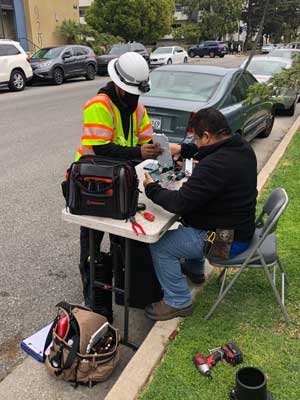
The FOA Fiber U “OJT-To-Cert” program includes both fiber optics and premises cabling (copper, fiber & wireless), so it covers techs working in both outside plant and premises jobs.
Like other FOA programs, the OJT-To-Cert program is free. If you and/or your company is interested in the FOA OJT-To-Cert program, contact FOA.
To explain how OJT
works and FOA's OJT-To-Cert program, FOA created a
short video: Lecture 62: On
The Job Training For Fiber Optics Using Fiber
U
FOA
Direct Certification Program For Experienced Fiber Optic Techs
Experience Plus Online Study At Fiber U = FOA Certification
Experienced fiber optic technicians can become FOA Certified using their experience in fiber optics and study for the FOA certification exams online at Fiber U. Thousands of industry professionals have applied to the FOA directly for certification without the need for classroom training, based on their knowledge and skills developed working the field. Since FOA certifications are based on KSAs (knowledge, skills and abilities), current techs can show the skills and abilities required through their field experience. FOA provides free online self-study courses at Fiber U for the knowledge part to prepare you for FOA certification exams which you can also take online.
If you are an experienced field tech interested in certification, and FOA is the internationally recognized certifying body for fiber optics, you can find out more about the FOA Direct Certification Program here.
If you are already a CFOT, FOA also offers many specialist certifications you can obtain based on your experience as a field tech. See what's available at Fiber U.
Fiber U "Basic Fiber Optics" Online Self-Study Course Now In Spanish
El curso de autoaprendizaje en línea "Fibra óptica básica" de Fiber U ahora en español
El sitio de aprendizaje en línea de FOA, Fiber U, tiene más de dos docenas de cursos de autoaprendizaje gratuitos sobre fibra óptica y cableado de instalaciones. Como era de esperar, el tema más popular es el curso "Fibra óptica básica", que se utiliza para iniciarse en la fibra óptica y como curso de preparación para realizar el examen de certificación FOA CFOT.
Ahora el curso básico de fibra óptica está disponible en español, utilizando el libro de texto FOA en español, la sección de la Guía en línea en español y la capacidad de YouTube para traducir subtítulos de video al español. El curso funciona exactamente como la versión en inglés con 10 lecciones, cada una con cuestionarios y una opción para tomar un examen de Certificado de finalización.
Para presentar el nuevo curso de
español Fiber U, el examen Certificate of
Completion es gratuito, así que dígaselo a sus
contactos.
Curso Básico de Fibra Óptica
de Fibra U en español.
New Fiber U Course: Fiber Characterization
FOA has added a new course at Fiber U on Fiber Characterization. Fiber
characterization is the process for testing long fiber cable plants for
its ability for carrying high speed communications. With so many
networks now operating at 100, 200, 400 or even 800 Gb/s, fiber
characterization is important, especially on older fiber optic cable
plants.The free Fiber U Fiber Characterization course is available in two forms, as a standalone Fiber U fiber Characterization Course with its own Fiber U Certificate of Completion and as a separate Lesson in the Fiber U Fiber Optic Testing course. This course is recommended for those studying for the FOA CFOS/FC Fiber Characterization certification.
Fiber U MiniCourses: Got An Hour Or Less? Learn Something New About Fiber Optics.
FOA has introduced a new type of Fiber U course, the MiniCourse, a free online course you could take in a short time, perhaps as you ate lunch at your desk or took a coffee break. The topics of these courses should explain what they are about, and these are all very important topics to fiber optic techs.
New Fiber U MiniCourse - Fiber Optic Jargon
There is a new MiniCourse at Fiber U - Fiber Optic Jargon. Jargon is the most important thing you need to learn when you learn about a new technology. This short Fiber U MiniCourse is intended to introduce you to fiber optic jargon and make learning about fiber much easier. It's aimed at novices but is a good refresher for even experienced techs.
Fiber Optics In Communications
Fiber Optic Jargon
How Optical Fiber Works
Fiber Optic Network Restoration
Fiber Optic Connector Identification
Fiber U Color Codes
The Mysterious dB of Fiber Optics
Fiber Optic Cable Bend Radius
Fiber Optic Link Loss And Power Budgets
Fiber Optic Connector Inspection And Cleaning
Fiber Optic Media Conversion
Fiber Optic Cable Midspan Access
Reading An OTDR Trace
Reference Cables For Testing
Fiber Optic Attenuators
The courses have two components, video lectures and readings, that are complementary. As usual there is a self-test to allow you to check your comprehension. As with other Fiber U courses if you desire, you can take a short test for a Fiber U Certificate of Completion that costs only $10.
All these free courses and many more are available at Fiber U.
What Fiber Techs
Don't Know -
What We Learn From FOA Certification Tests
As FOA moves more testing over to our digital online testing system at ClassMarker, we have access to more data about our testing, including what questions and topics on the tests are answered incorrectly most often. Having this data gives us an opportunity to evaluate the questions and how they are stated, but more importantly it allow us to help our instructors teach the subjects and us to change our curriculum and online courses to emphasize these particular topics. These are some of the topics that we have noticed are answered incorrectly more often in FOA and Fiber U tests.
Most of the questions missed are on testing.
1. OTDRs - particularly what information is in the OTDR trace.
2. The difference between dB and dBm
3. Loss budgets - both the concepts and doing the math
4. Insertion loss testing - single-ended or double ended for testing patchcords or cable plants, how to set 0dB references
5. Units of measure - fiber is measured in microns, wavelengths in nanometers, etc.
At FOA, we're working to add Fiber U MiniCourses on these topics and working with our schools to emphasize these topics in their classes.
If you are going to be taking a FOA certification course or test in the near future, these topics should be on your final exam study list.
What We Learn From Hands On Labs
We learn about students performance in hands-on labs from the feedback of our instructors and our own experiences too. One big problem is the use of hand tools. Growing up today, you learn how to use keyboards, mouses and touch screens, but decades ago, you also learned how to use basic hand tools. This is big enough of a problem that we're considering adding some video lessons on basic hand tools to prepare students for cable prep, termination and splicing that require the use of hand tools.

FOA offers free online self-study programs at Fiber U. Many users are preparing for FOA certification programs - taking courses at our schools or using the Direct Certification program. Some of our schools are requiring Fiber U programs as prerequisites for their classroom courses so they can spend more time on hands-on activities.
Publications / Resources
Cross Reference To FOA Tech Materials
FOA has so much technical reference material, we created a cross reference guide to the textbooks,
Online Guide and Fiber U courses, all the FOA technical information.
Besides the textbooks, online Guide and Fiber U, each section of the
Guide also includes links to the 100+ FOA videos available.
Cross Reference Guide to Textbooks, Online Guide and Fiber U
FOA Guide To Fiber Optic Workforce Development
To help those new to fiber optic workforce development, FOA has created a web page we call "Fiber Optic Workforce Development."
In this page, we share what we have learned about the fiber optic
workforce, who they are and how they learn their trade. We discuss what
defines a fiber optic tech and how they should be certified.
Read the FOA Guide To Fiber Optic Workforce Development online.
Latest FOA Book: Fiber Broadband (Paperback and Kindle)
 In less than half a century,
fiber optics has revolutionized communications and to a large extent,
society in general. Broadband, what many today call high speed Internet
access, has become a necessity for everyone, not a luxury. The
technology that makes broadband possible is fiber optics, connecting the
continents, cities, and just about everybody. Even fiber to the home
(FTTH) brings broadband to hundreds of millions worldwide.
In less than half a century,
fiber optics has revolutionized communications and to a large extent,
society in general. Broadband, what many today call high speed Internet
access, has become a necessity for everyone, not a luxury. The
technology that makes broadband possible is fiber optics, connecting the
continents, cities, and just about everybody. Even fiber to the home
(FTTH) brings broadband to hundreds of millions worldwide. How did we get from an era when communications was making a telephone call or sending a telegram to today’s world where every piece of information – and misinformation – is available at the click of a mouse or touch on a screen? How did we get from a time when a phone was connected on copper wires to being able to connect practically anywhere on a handheld device with more computing power than was available to scientists and engineers only decades ago?
How does broadband work? Without fiber optics it would not work.
This book is not the typical FOA technical textbook - it is written for anyone who wants to understand fiber broadband or fiber optics or the Internet. It's also aimed at STEM teachers who want to include communications technology in their classes. This book will try to explain not only how fiber broadband works, but how it was developed. It is intended to be an introduction to communications technology appropriate for a communications course at almost any level (junior high, high school or college,) for managers involved with broadband projects, or for anyone who just wonders how all this stuff works.
The Fiber Optic Association Guide To Fiber Broadband
Paperback ($12.95) and Kindle ($9.95) versions available from Amazon or most booksellers. Kindle version is in color!
More Translations of FOA Textbooks
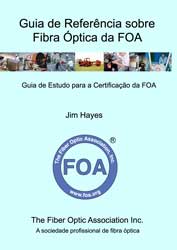 FOA is a very international organization and it works hard to
accommodate the language needs of everyone. We have been translating our
books and website into the languages most requested, and this month, we
add two more textbook translations. We also want to thank Jerry Morla,
FOA CFOS/I instructor and Director who has been doing the recent
translations into Spanish, his native language.
FOA is a very international organization and it works hard to
accommodate the language needs of everyone. We have been translating our
books and website into the languages most requested, and this month, we
add two more textbook translations. We also want to thank Jerry Morla,
FOA CFOS/I instructor and Director who has been doing the recent
translations into Spanish, his native language.
Here is a listing of all the FOA textbook Translations
Spanish Editions:
Guía de Referencia de la Asociación de Fibra Óptica (FOA) Sobre Fibra Óptica: Guía de estudio para la certificación de la FOA Amazon
La Referencia de Cableado para Predios de la FOA: Guía para Certificación de la FOA Amazon
La Asociación de Fibra Óptica Manual de Fibra Hasta el Hogar : Para Planificadores, Gestores, Diseñadores, Instaladores y Operadores De FTTH Amazon
Guía de Referencia de la FOA sobre Diseño de la red de fibra óptica: Guía de Estudio para la Certificación de la FOA Amazon
And the FOA Reference Guide To Fiber Optics:
French Edition: Le Guide de référence de la FOA pour la fibre optique et et guide d'étude pour la certification FOA: Guide d'étude pour la certification FOA Amazon
Portuguese Edition: Guia de Referência sobre Fibra Óptica da FOA : Guia de Estudo para a Certificação da FOA Amazon
The subject matter of these books is also translated in the FOA Guide online.
Planning A Fiber Optic Project?
The FOA Guide To Fiber Optic Projects includes this timeline and comments on project planning and implementation.FOA Video
Lectures On YouTube
Did
you know YouTube will close caption videos in many
languages?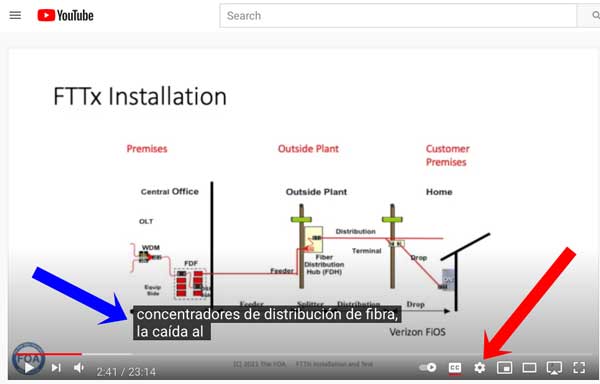
Sign in with Google to get translations for closed captioning. Click on the settings icon (red arrow.) Choose "Subtitles". English is the default language. Click on the arrow after "English (auto-generated) >". In the new window click on "Auto-translate" and choose the language you want.
FOA Loss Budget
Calculator On A Web Page 5/2020
FOA has written many articles about loss budgets, something everyone involved in fiber optics needs to know and needs to know how to calculate. We recently discovered how to get a spreadsheet ported to a Web page, so we created this web page that calculates loss budgets. We have an iOS loss budget app, but with this web page, you can calculate loss budgets from any device, smart phone, tablet, laptop, or desktop computer that has web browsing capability.

Bookmark this page (especially on your smartphone): FOA Loss Budget Calculator Online
 We are continually updating the Online Reference
Guide to keep up with changes in the industry and
adding lots of new pages of technical information.
When you go to the FOA
Guide Table of Contents to see the latest
updates - look for
We are continually updating the Online Reference
Guide to keep up with changes in the industry and
adding lots of new pages of technical information.
When you go to the FOA
Guide Table of Contents to see the latest
updates - look for  .
.

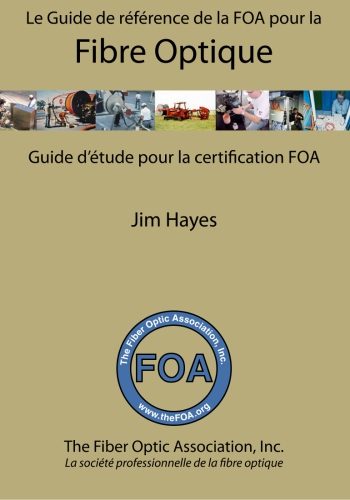





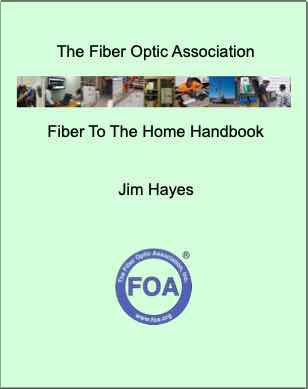

Fiber Optics (4 languages), Premises Cabling, OSP fiber and construction, Network Design, Testing, FTTH Handbook and our latest - FIber Broadband
-
The FOA has it's own
reference books for everyone working in fiber
optics - contractors, installers and end users as
well as for use as textbooks in classes at
educational institutions. They are available as
printed books or Kindle at much lower prices than
most textbooks since we self-publish and sell
online, cutting out the middlemen. Click on the
book images for more information. The Reference
Guide To Fiber Optics is also available in
Spanish, French and Portuguese. The Design book is available in English
and Spanish.
Click on any book for more information about it.
FOA has reprinted

"Lennie Lightwave's Guide" on its 25th anniversary in a special print edition.
Lennie and Uncle Ted's Guides are online.
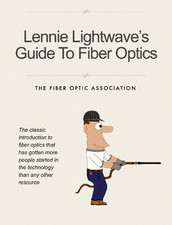
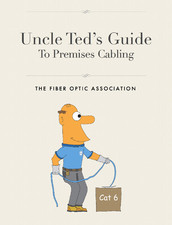
Click on any of the books to learn more.
- Fiber Optic Safety Poster to download and print
Resources For Teachers In K-12 And Technical Schools
Teachers in all grades can introduce their students to fiber optic technology with some simple demonstrations. FOA has created a page for STEM or STEAM (science, technology, engineering, arts and math) teachers with materials appropriate to their classes. Fiber Optic Resources For Teachers.
Safety
On Safety
The FOA is concerned about safety!FOA considers safety an integral part of all our programs, curriculum materials and technical materials. We start all our textbooks and their online versions with a section on safety in the first chapter, like this: Before we get started - Safety First!
There are pages on the FOA Guide on Safety procedures Including Eye Safety and. Digging Safely
And a YouTube lecture: FOA Lecture 2: Safety When Working With Fiber Optics
In our OSP Construction Section, these pages cover many safety issues including those related to the construction of the cable plant: Project Preparation And Guidelines, Underground Cable Construction, Underground Cable Installation and Aerial Cable Installation.
There is even a safety poster for the fiber activities: PDF Safety Rules For Fiber Optics
Other Safety Resources:
There is a toll-free
"call before you dig" number in the USA: Dial 811. See www.call811.com
for more information in the US. Here is their map of resources by states.
In Canada, it's "Click Before You Dig.com" They also have a page of resources by US states and Canadian provinces.
The Common Ground
Alliance has an excellent "Best Practices Guide"
online
- The US Department of Transportation has a website called "National Pipeline Mapping System" that allows one to search for buried pipelines.
Why We Warn You To Be Careful About Fiber Shards
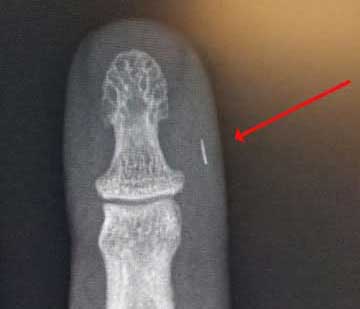
Photo courtesy Brian Brandstetter, Mississauga Training Consultantcy
FOA Corporate Program - Products & Services
Search for products and services offered by hundreds of fiber optic companies worldwide.
List of corporate information on the FOA website.
FOA Corporate Program is available to companies involved in fiber optics as manufacturers, contractors, installers, etc. Read more.
FOA/About
About The FOA
- Contact
Us: http://www.foa.org
or email <info@foa.org>
FOA has a company page and four LinkedIn Groups
FOA - official company page on LinkedIn
FOA - covers FOA, technology and jobs in the fiber optic marketplace
FOA Fiber Optic Training - open to all, covers fiber optic technology and training topics
Grupo de La Asociación de Fibra Óptica FOA (Español)
What is The FOA?
The FOA is a, international non-profit educational association chartered to promote professionalism in fiber optics through education, certification and standards.
Founded in 1995 by a dozen prominent fiber optics trainers and leaders from education, industry and government as a professional society for fiber optics and a source of independent certification, the FOA has grown to now being involved in numerous activities to educate the world about fiber optics and certify the workers who design, build and operate the world's fiber optic networks.
Read More
FOA History
FOA Timeline of Fiber Optics
Contact Us
The Fiber Optic Association Inc.
https://www.foa.org or email <info@foa.org>
https://www.thefoa.org or email <info@thefoa.org>
Telephone/text: 760-451-3655
The FOA Home Page

Want to know more about fiber optics? Study for FOA certifications? Free Self-Study Programs are on "Fiber U®." Looking for specific information? Here's the largest technical reference on the web: The FOA Online Fiber Optic Reference Guide.

Free online self-study programs on many fiber optics and cabling topics are available at Fiber U, FOA's online web-based training website.
-
Contact Us
The Fiber Optic Association Inc.
Fiber Optic Timeline
(C)1999-2023, The Fiber Optic Association, Inc.
FOA Logo Merchandise
-
New FOA Swag! Shirts,
Caps, Stickers, Cups, etc.
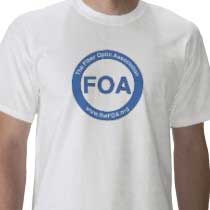
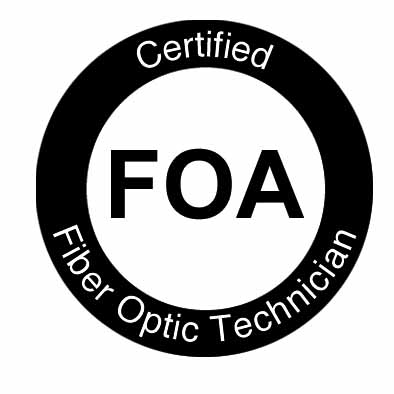
Your Name, CFOT® - It pays to advertise!
The FOA encourages CFOTs to use the logo on their business cards, letterhead, truck or van, etc. and provides logo files for that purpose. But we are also asked about how to use the CFOT or CFOS certifications. Easy, you can refer to yourself as "Your Name, CFOT" or "Your Name, CFOS/T" for example.
Feel free to use the logo and designations to promote your achievements and professionalism!
Contact FOA at info@thefoa.org to get logos in file format for your use.Privacy Policy (for
the EU GDPR): The FOA does not
use cookies or any other web tricks to gather
information on visitors to our website, nor do
we allow commercial advertising. Our website
hosts may gather traffic statistics for the
visitors to our website and our online testing
service, ClassMarker, maintains statistics of
test results. We do not release or misuse any
information on any of our members except we will
confirm FOA certifications and Fiber U
certificates of completion when requested by
appropriate persons such as employers or
personnel services.
Read
the complete FOA Privacy Policy here.






